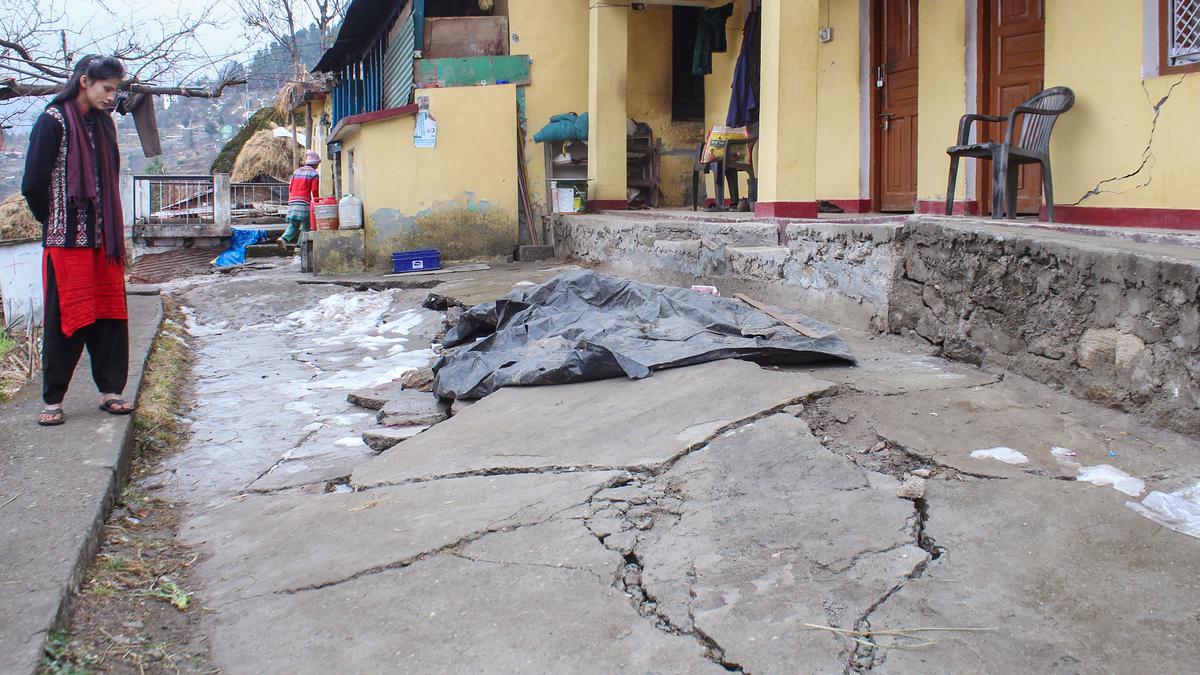
Morainic foundation, population, building pressure behind Joshimath subsidence, say scientific reports
The Hindu
Joshimath's land subsidence due to its location on a slope of morainic deposits, population pressure, multi-storeyed buildings, and lack of proper water disposal system, according to scientific reports. The reports suggest need for town planning review, construction typology, practices, materials, regulations, and awareness.
Scientific and technical institutions studying land subsidence in Joshimath have attributed the crisis to the hill town's location on a slope over morainic deposits or loose sediments, population pressure, construction of multi-storeyed buildings and the absence of a system for proper disposal of water coming from the upper reaches.
Though the reports are separate and approach the problem from different angles, they are largely in concurrence with each other on the combination of factors that may have led to the aggravation of the situation in Joshimath early this year.
Joshimath's susceptibility to land subsidence because of being located on a foundation of loose sediments coupled with increasing population pressure and multi-storeyed buildings, including hotels, in the town are some of the factors cited in nearly all the reports submitted by eight different institutions.
The Central Building Research Institute, Central Ground Water Board, Geological Survey of India, Indian Institute of Remote Sensing, Indian Institute of Technology-Roorkee, National Institute of Hydrology, National Geophysical Research Institute, and Wadia Institute of Himalayan Geology were engaged to conduct a study of the problem when it was at its worst in January this year.
The institutions submitted their separate reports to the National Disaster Management Authority by the end of January 2023 but they were not made public until the Uttarakhand High Court intervened, questioning the justification for not releasing them.
The Uttarakhand State Disaster Management Authority made the reports public by uploading them on its official website on Sunday following the high court's intervention.
Hearing a PIL recently, it had questioned the justification for not making the reports public. Put together, the reports run into more than 700 pages.











